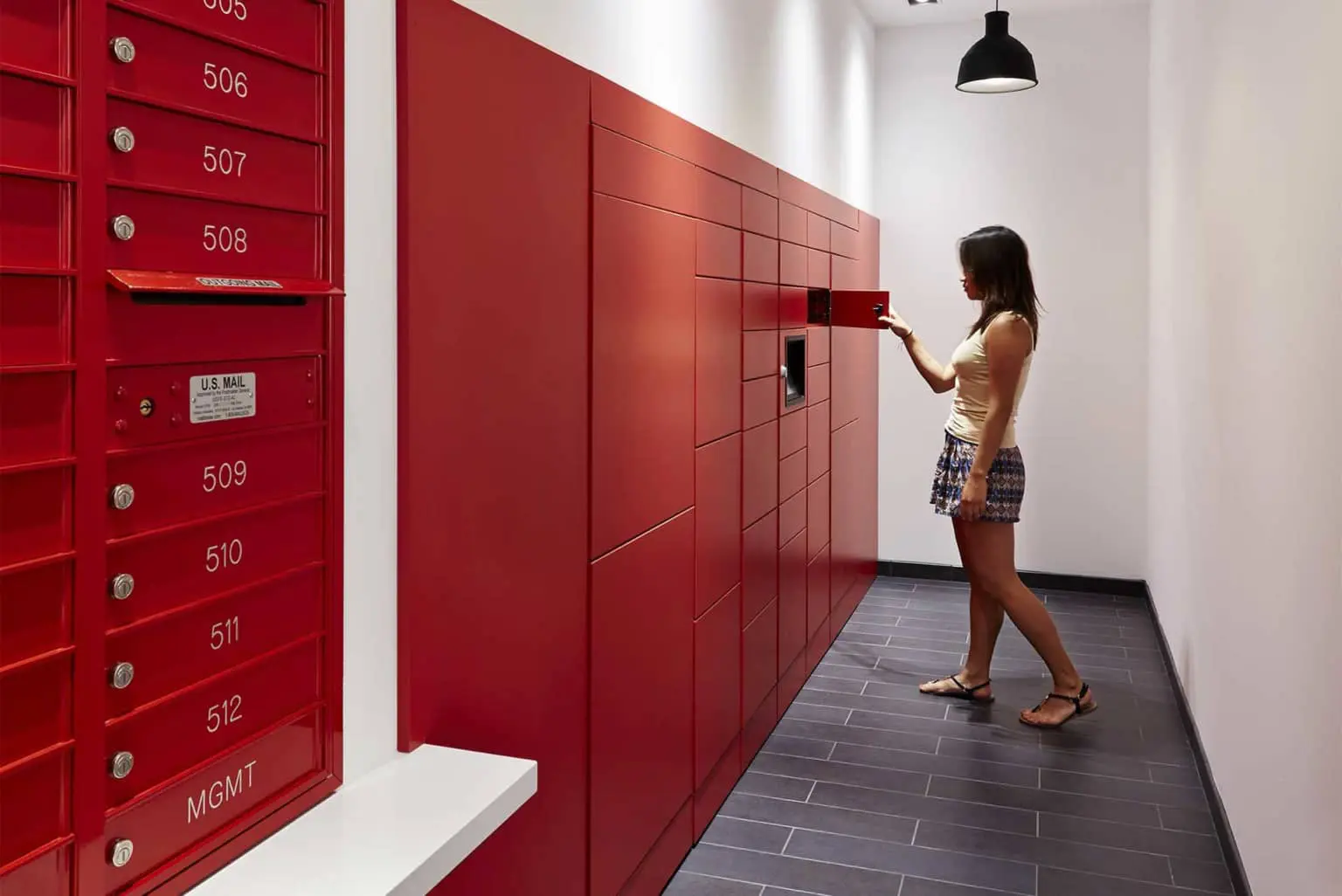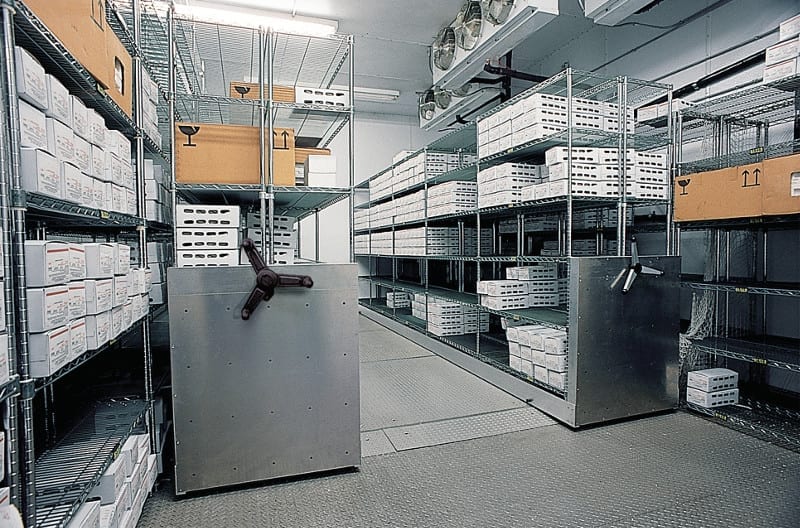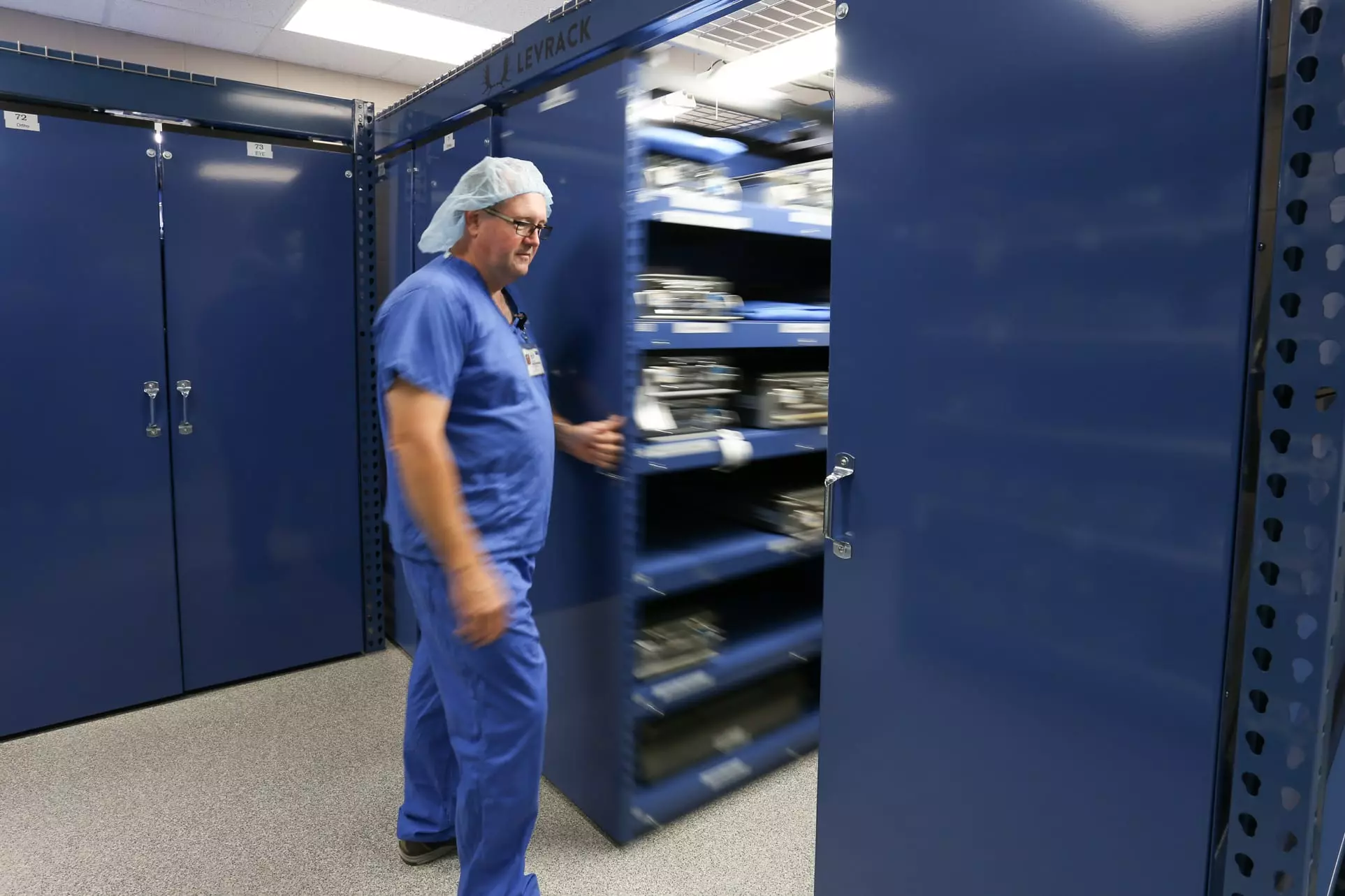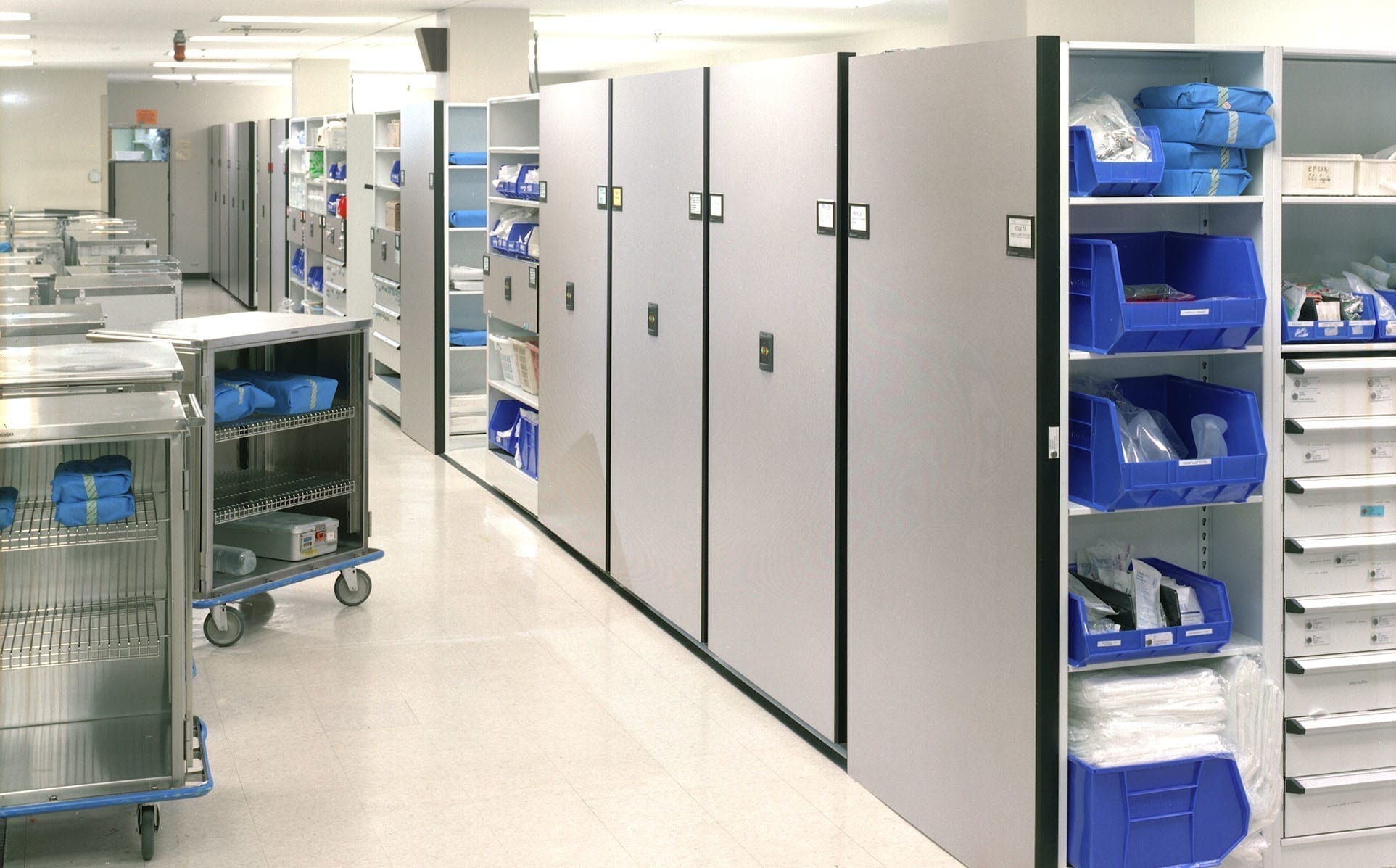
The library is the heart of any educational institution, serving as a valuable resource center for students and staff. However, one of the challenges that school libraries often face is the limited space available to store books, resources, and other materials. School library space optimization is essential to ensure efficient storage, easy access to resources, and a conducive learning environment. High-density storage systems offer practical solutions to maximize the storage capacity of school libraries, providing space-saving features and innovative organization techniques. In this blog, we will explore seven storage solutions that can help school libraries optimize their space and enhance functionality. From compact shelving to customized storage systems, we will discuss the benefits, features, and future trends of high-density storage solutions for school libraries.
High-Density Storage Systems in School Libraries
School libraries need efficient storage solutions to accommodate a large volume of books, multimedia resources, and equipment, while also preserving workspace and ensuring easy access to resources. High-density storage systems have emerged as a solution to address these challenges. By making use of vertical space and compact shelving units, high-density storage systems offer a practical approach to optimize storage capacity in limited library spaces. Let’s delve deeper into the world of high-density storage systems and the benefits they bring to school libraries.
High-density storage systems are innovative storage solutions designed to maximize storage capacity within a smaller footprint. These systems utilize compact shelving units, rail systems, and mechanical assist features to optimize space utilization. By eliminating unnecessary aisles and closing aisles when not in use, high-density storage systems significantly increase the storage capacity of school libraries. The space-saving design of these systems allows for the storage of a greater number of books, multimedia resources, and equipment, while still providing easy access to the stored items. High-density storage systems offer a practical and efficient shelving system, making the most of the available storage space.
Over the years, high-density storage systems have evolved to meet the changing needs of libraries. The introduction of compact mobile storage systems revolutionized the way libraries approached storage solutions. These systems feature shelving units that can be compacted together to maximize storage capacity, and then easily opened to access the desired aisle with the press of a button. Rail systems enhance the movement of the shelving units, allowing for smooth carriage movement and effortless access to stored items. The evolution of high-density storage systems has resulted in more efficient space utilization and improved accessibility, making them an indispensable solution for school libraries.
High-density storage systems offer a range of benefits that enhance the functionality of school libraries. By optimizing the storage space, these solutions create a safer, more organized, and user-friendly library environment. Easy access to books and resources is facilitated through compact shelving units and mobile storage systems. Additionally, high-density storage solutions enable efficient organization of library materials, ensuring that items are readily available to students and staff. By preserving workspace and maximizing storage capacity, high-density storage solutions contribute to the overall productivity and effectiveness of the library.
- Space Optimization for School Libraries is a critical aspect of school library storage solutions. With limited storage space available, it is essential to make the most of every square footage. High-density storage systems provide a compact and efficient solution to optimize space in school libraries. By utilizing vertical space, these storage systems effectively increase the storage capacity of the library, accommodating a larger number of books, multimedia resources, and equipment. The available space is maximized, while still providing easy access to the stored items. Space optimization in school libraries ensures a streamlined and organized storage system, making it easier for students and staff to find and retrieve the resources they need.
- Easy Access to Books and Resources to facilitate a smooth learning experience. High-density storage solutions offer convenient access to library materials, ensuring that books and resources are readily available to students and staff. Compact shelving units and mobile storage systems enable easy navigation through the library aisles, allowing users to effortlessly locate the items they need. With the press of a button, shelving units can be moved to create open aisles, providing quick access to books and resources. Easy access to books and resources enhances the overall user experience in the library, promoting efficient research and learning.
Different Types of High-Density Storage Solutions
High-density storage solutions come in various forms, each catering to specific storage needs and space requirements. From compact shelving to customized library storage systems, there are several options available to maximize storage capacity in school libraries. Let’s explore the different types of high-density storage solutions that can transform the way school libraries store and access their resources.
Compact Shelving for Libraries
Compact shelving is a space-saving storage solution that significantly maximizes storage capacity in libraries, particularly in areas with limited floor space. These shelving units feature a high-density design, utilizing vertical space to accommodate more books and resources. Here are some key features of compact shelving:
- Compact shelving units allow for the storage of a larger number of books and resources in the same space compared to traditional shelving units.
- The space between the shelves can be adjusted to accommodate books of different sizes, ensuring efficient utilization of storage space.
- Compact shelving allows for easy expansion or reconfiguration, catering to changing storage needs over time.
- By eliminating unnecessary aisles, compact shelving creates a more spacious and open library environment.
Customized Library Storage Systems
Customized library storage systems offer tailor-made solutions to meet the unique storage needs of school libraries. These systems consider factors such as available space, storage requirements, and the types of resources to be stored. Here’s why customized library storage solutions are beneficial:
- Customized storage systems make efficient use of available space, creating additional storage capacity within the library.
- The design of customized storage systems is optimized to accommodate the specific types of resources, such as books, multimedia materials, or equipment, ensuring effective storage solutions.
- Customized storage solutions can be designed to fit seamlessly within the library environment, enhancing the aesthetics of the space.
- With customized storage systems, library administrators have the flexibility to choose storage options that align with the library’s functional and organizational needs.
Efficient Organization Techniques
Efficient organization is essential to maximize storage capacity in school libraries. High-density storage systems provide a foundation for implementing efficient organization techniques. Here are some key techniques to consider:
- Categorize books and resources based on genre, subject, or other relevant criteria to facilitate easy retrieval.
- Utilize labeling systems to clearly identify the contents of each shelving unit, making it easier for users to locate specific items.
- Implement a logical shelving system layout, grouping similar items together and ensuring a consistent organization structure throughout the library.
- Consider implementing color-coded labeling or signage to further assist users in navigating the library.
- Regularly review and update the organization techniques to accommodate changes in the library’s collection and storage needs.
Multimedia Storage in School Libraries
In addition to books, school libraries often house a variety of multimedia resources, including DVDs, CDs, and digital media. Efficient storage of multimedia materials is essential to ensure easy access to these resources. High-density storage solutions offer specialized options for multimedia storage, optimizing storage capacity while providing easy retrieval of items. Here are some features of multimedia storage solutions:
- Multimedia storage solutions provide designated space for different types of multimedia resources, allowing for efficient organization.
- Compact shelving units and customizable storage systems accommodate a high volume of multimedia materials, making the most of the available storage space.
- Specialized storage features, such as adjustable shelves or compartments, ensure the safe storage of delicate or valuable multimedia resources.
- Efficient organization of multimedia assets allows for easy browsing, retrieval, and loaning of materials, enhancing user experience in the library.
The Importance of Multimedia Storage
Multimedia resources play a valuable role in today’s educational landscape, providing students with access to a wide range of learning materials. Efficient storage of multimedia resources is essential to preserve valuable space in school libraries. High-density storage solutions offer dedicated storage options for multimedia materials, ensuring that these resources are stored safely and conveniently. The importance of multimedia storage in school libraries includes:
- Optimization of storage space by efficiently storing a high volume of multimedia resources within a compact footprint.
- Preservation of valuable library space, allowing for the storage of additional books, equipment, or study areas.
- Easy access to multimedia resources, enabling students to enhance their learning experience and engage with various educational materials.
- Efficient organization of multimedia storage solutions minimizes the risk of damage or loss, ensuring the preservation of these valuable learning assets.
Best Practices for Storing Multimedia Resources
Storing multimedia resources requires additional considerations to ensure their safety, organization, and easy access. Here are some best practices to follow when storing multimedia resources in high-density storage systems:
- Use protective cases or sleeves to safeguard delicate or valuable multimedia items, such as CDs or DVDs.
- Consider the storage capacity of the shelving units, allowing sufficient space to accommodate the variety of multimedia materials in the library’s collection.
- Implement a systematic labeling system, clearly identifying the contents of each storage location to facilitate easy retrieval.
- Regularly update the catalog and collections management system to accurately track the availability and location of multimedia items.
- Periodically review and assess the condition of multimedia materials, replacing damaged items to maintain the quality of the library’s collection.
Workspace Preservation in Limited Library Spaces
Preserving workspace in small library spaces is crucial for creating a conducive environment for students and staff. High-density storage solutions offer practical solutions to maximize the available workspace, ensuring a functional and organized library. Let’s explore strategies to preserve workspace in small libraries and the role of high-density storage in achieving this goal.
In small libraries, making the most of the available space is essential to preserve workspace. Here are some strategies to help preserve workspace in small libraries:
- Utilize compact shelving units to optimize storage capacity while minimizing the footprint of the storage system.
- Implement mobile book carts or shelves that can be easily moved to create open space when needed.
- Consider using stackable or foldable furniture that can be efficiently stored away when not in use, freeing up valuable space.
- Create cozy reading nooks or study areas within the library to maximize the usage of available space.
- Implement smart storage solutions, such as modular storage units, to create a clutter-free and spacious environment.
High-density storage systems play a vital role in preserving workspace by optimizing storage capacity within limited library spaces. Here’s how high-density storage contributes to workspace preservation:
- High-density storage solutions make efficient use of real estate, ensuring the storage capacity of the library does not encroach upon the available workspace.
- Compact shelving units and mobile storage systems reduce the footprint of the storage system, creating more open space within the library.
- By eliminating unnecessary aisles and closing aisles when not in use, high-density storage solutions create a more open and accessible workspace.
- Efficient organization of books and resources within high-density storage systems minimizes clutter, contributing to a clean and organized library environment.
- The streamlined storage system provided by high-density storage solutions enables a more functional and productive workspace for library patrons and staff.
The Impact of Mobile Shelving in Libraries
Mobile shelving systems have transformed the way libraries approach storage solutions. By offering flexible, space-saving features, mobile shelving has a significant impact on the storage capacity and accessibility of library resources. In this section, we will explore the benefits of mobile shelving in school libraries and the safety measures associated with their use.
Mobile shelving, also known as a mobile storage system, is a storage solution that incorporates shelving units mounted on mobile carriages. These shelving units can be easily moved along floor tracks, creating a compact storage system that maximizes space utilization. Here are the key features of mobile shelving systems:
- Mobile shelving units provide space-saving features by eliminating unnecessary aisles often found in traditional shelving systems.
- Carriage movement is facilitated through mechanical assist or powered mechanisms, allowing for smooth and effortless access to stored items.
- The length of the carriage and the carriage weights can be customized to accommodate the specific storage needs of the library.
- Mobile shelving units are available in a variety of configurations, allowing for versatility in storage solutions to fit the library’s requirements.
Mobile shelving offers a range of benefits that make it a valuable storage solution in school libraries. Here are some of the advantages of mobile shelving:
- Increased storage capacity: By eliminating unnecessary aisles, mobile shelving systems make efficient use of available floor space, increasing storage capacity.
- Adaptable storage solutions: Mobile shelving units can be easily reconfigured, allowing for flexibility in accommodating changing storage needs.
- Enhanced safety features: Mobile shelving units are equipped with safety features to ensure the well-being of library users, including carriage movement sensors and infrared light beam technology.
- Facilitate easy access to resources: Mobile shelving units can be moved to create open aisles, providing quick access to books and resources.
- Efficient organization: Mobile shelving units assist in maintaining an organized library space, reducing the time and effort required to locate and retrieve items.
Safety Measures in High-Density Storage Systems
Safety is of utmost importance in high-density storage systems, particularly in library environments where public safety is a priority. High-density storage solutions include a range of safety measures to ensure the secure storage and access of library resources. Here are some safety measures to consider:
- Safety features, such as infrared light beam technology, are in place to prevent accidents during carriage movement.
- Compact storage solutions minimize safety hazards by reducing the risk of items falling or toppling over.
- Mechanical assist systems, such as mechanical assist or powered mechanisms, ensure the safe movement of shelving units, preventing strain or injury to library users.
- High-density storage systems are designed to support heavy items, ensuring the stability and safety of the storage system.
- Regular maintenance and inspections of high-density storage systems are essential to identify and address any safety concerns.
Safety Options for High-Density Storage
To promote safety in high-density storage, various safety options are available to enhance the functionality and security of the storage system. Here are some safety options to consider:
- Compact storage solutions reduce safety hazards by minimizing the risk of items falling or shifting within the shelving units.
- Mechanical assist systems provide easy movement of shelving units, ensuring the safety of library users during carriage movement.
- Safety features, such as carriage weights that assist with optimal carriage movement, ensure the stability of the storage system.
- Incorporation of safety measures, such as carriage movement sensors, infrared light beam technology, and safety locks, further enhance the safety of high-density storage solutions.
- Regular safety training sessions for library staff promote the safe usage and operation of high-density storage systems.
Safety features of high-density storage systems play a crucial role in ensuring the secure access of resources to library users. Here’s how high-density storage solutions ensure safe access to resources:
- Easy access to resources is facilitated by high-density storage solutions, allowing library users to retrieve items without the need to climb or strain to reach them.
- Safety features, such as infrared light beam technology, detect a person’s entry into the aisle, ensuring the shelving units are secured before the person accesses the stored items.
- Mechanical assist systems reduce the effort required to move shelving units, preventing strain or injury to library users.
- The compact storage design of high-density storage solutions minimizes the risk of items falling or toppling over during access, further enhancing the safety of library users.
- Safety features such as safety locks ensure that the shelving units remain secured during access, preventing accidental movement and enhancing user safety.
Exploring the Future of High-Density Storage
The world of high-density storage systems continues to evolve, embracing advancements in technology to meet the changing needs of libraries. In this section, we will explore the future trends and the role of technology in high-density storage solutions for school libraries.
Trends in High-Density Storage for Libraries
High-density storage systems are subject to ongoing advancements and trends, ensuring that libraries have access to the most innovative storage solutions available. Here are some trends to watch for in high-density storage for libraries:
- Integration of technology: High-density storage systems are incorporating technology features to enhance functionality, such as automated retrieval systems or digital cataloging.
- Customized solutions: The trend of personalized storage systems is expected to continue, offering unique storage solutions to cater to the specific needs of libraries.
- Multimedia storage solutions: With the increasing use of multimedia resources, high-density storage systems are evolving to include specialized storage options for these materials.
- Flexible storage configurations: High-density storage solutions are being designed to accommodate a variety of library resources, allowing easy reconfiguration as storage needs change over time.
- Efficient space utilization: Future developments in high-density storage will focus on maximizing storage capacity while minimizing the footprint of the storage system.
The Role of Technology in High-Density Storage
Technology plays a vital role in the development of high-density storage systems, offering innovative features that enhance the functionality and efficiency of library storage solutions. Here’s how technology contributes to high-density storage:
- Automated retrieval systems use advanced technology to streamline the process of accessing stored items.
- Digital cataloging and inventory management systems improve the tracking and organization of library resources, ensuring easy access and efficient storage.
- Advanced security features, such as access controls or biometric authentication, enhance the safety and security of high-density storage solutions.
- Integration of sensors and mechanical assist mechanisms facilitates the movement of shelving units with minimal effort, optimizing the usability of the storage system.
- Continuous innovation and the integration of technology in high-density storage systems will shape the future of library storage, providing libraries with more efficient, secure, and user-friendly storage solutions.
The Role of Local Expertise in Implementing High-Density Storage
Implementing high-density storage solutions requires the expertise of professionals to ensure the successful integration of storage systems within school libraries. In this section, we will explore the importance of local expertise and the role of experts in finding the right storage solutions for your library.
Local expertise is essential when implementing high-density storage solutions, as it provides valuable insights into the specific storage needs and challenges of school libraries. Here’s why local expertise matters:
- Local experts have a deep understanding of the unique requirements of school libraries, taking into account factors such as available space, resources, and user needs.
- Customized storage solutions can be designed based on the expertise of local professionals, ensuring the storage system aligns with the library’s functional and organizational needs.
- Local expertise offers a tailored approach to high-density storage, providing solutions that are customized to the specific requirements of the library, resulting in an efficient and effective storage system implementation.
Frequently Asked Questions
Before choosing a high-density storage solution, it is essential to assess whether it aligns with your library’s storage needs. Consider the following factors to determine if high-density storage is the right choice for your library:
- Evaluate the volume of books and resources to be stored, ensuring that a high-density storage system can accommodate the storage capacity required.
- Assess the available space in your library, as high-density storage solutions are designed to optimize storage capacity within a smaller footprint.
- Consider the accessibility requirements of your library resources, as high-density storage solutions facilitate easy access to stored items through compact shelving units or mobile storage systems.
- Evaluate the long-term storage needs of your library to ensure that a high-density storage solution can cater to future expansion or changes in the library’s collection.
Maximizing space in a school library requires creative solutions to make the most of the available square footage. Here are some strategies to consider:
- Utilize vertical space by installing tall bookshelves or storage units.
- Implement mobile book carts or shelves that can be easily moved around to create open space when needed.
- Consider using stackable or foldable furniture that can be stored away to free up space when not in use.
- Create cozy reading nooks or study areas within the library to optimize space.
- Use modular shelving units to accommodate changing storage needs and maximize space efficiency.
Yes, the storage solutions discussed in this blog can be utilized in other educational settings, such as classrooms or offices. The principles of high-density storage, space optimization, and easy access to resources apply to a variety of educational environments. Whether it’s compact shelving, mobile storage, or customized storage systems, the benefits of high-density storage solutions can be adapted to meet the storage needs of classrooms, offices, or other educational spaces. By implementing efficient storage solutions, these settings can maximize their available space, enhance organization, and ensure easy access to resources, creating a more productive and functional environment.
Yes, storage solutions can also enhance the aesthetic of the library, contributing to an inviting and visually appealing space. Here’s how storage solutions can enhance the aesthetic of the library:
- Incorporate colorful and stylish bookshelves to add a touch of design while providing storage for books and resources.
- Utilize decorative bins and baskets to store smaller items, adding a visual element while keeping the space organized.
- Install wall-mounted shelves or display units to showcase books or valuable items, adding visual interest to the library space.
- Consider furniture pieces like ottomans or benches with hidden storage compartments, combining functionality and design to optimize space.
- Choose storage solutions that complement the overall library design, incorporating materials, colors, and finishes that enhance the aesthetics of the space.




